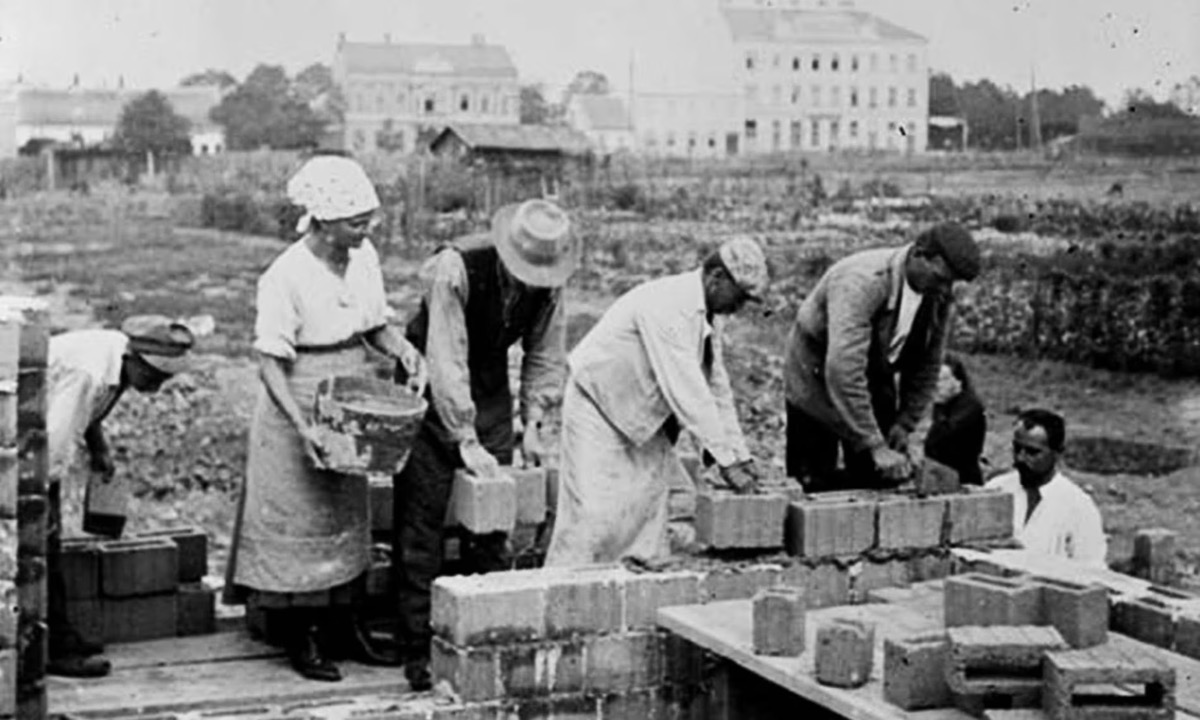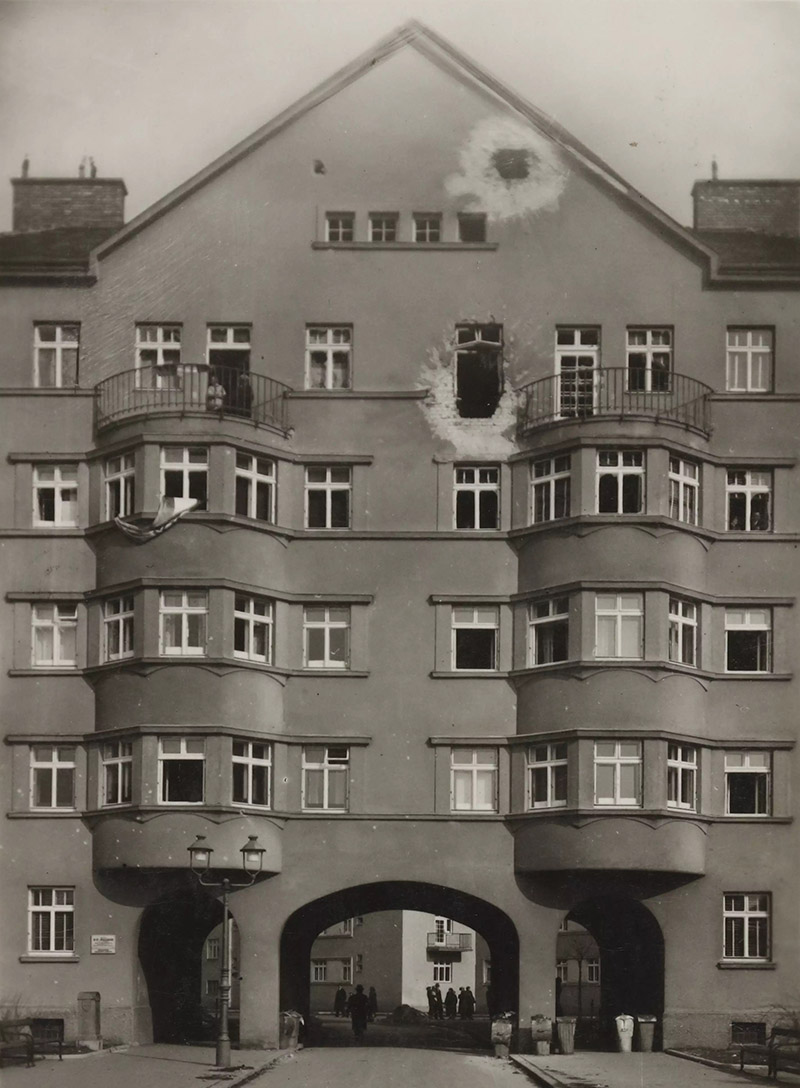Timeline of Vienna’s Social Housing
Vienna’s history of social housing began in the early 20th Century and has lasted for more than 100 years. Social housing grew rapidly in the early years with strong political support from the left but was brought to a halt during the fascist regime of the 1930s and 1940s. After World War II, Vienna faced a major rebuilding effort because many of its residential buildings had been bombed. The post-war years brought about a renewed commitment to social housing, and this commitment has continued to be a stable part of Vienna’s residential development for the past 80 years. Unlike other Western European cities, Vienna kept its public social housing stock under municipal control. For the past 40 years, most new social housing has been built by private limited-profit housing associations and cooperatives. This high concentration of publicly-owned social housing alongside private housing is unique to Vienna and creates a broad income mix in Vienna’s social housing system which has strengthened its political support over time.


Turn of the Century
At the beginning of the 20th Century, Vienna was struggling with a severe housing crisis that significantly worsened during World War 1 (1914-1918) as people living in the war-ravaged country moved to Vienna in search of jobs, food, and safety. By 1919, Vienna’s housing crisis had reached an apex with more than a quarter of the population living in overcrowded, deteriorating and unhealthy conditions. Nearly 75% of the roughly 550,000 Viennese apartments were overcrowded single and two room apartments with no running water and a single sink shared by multiple dwelling units.
Lacking regulation, rents rose rapidly, and evictions and overcrowding became widespread. To make ends meet, apartment dwellers rented out beds by the hour to “bett gehers” or temporary lodgers. By 1918, an estimated 90,000 Viennese were homeless. Widespread food shortages and virulent health epidemics caused extremely high rates of illness and death, particularly among the poor. These forces led to growing unrest and the formation of social movements pushing for new housing and improved social welfare.


The Settler’s Movement
By 1918, a radical self-help movement emerged in Vienna as large numbers of unsheltered people set up makeshift shelters on open land, forming cooperatives to grow vegetables and breed small livestock for food. Gradually, the “wild settlers'' movement grew into an entire system of non-profit building activity. The settler cooperatives joined together to petition the city for support. Vienna’s Mayor Jacob Reumann promised the purchase and development of land. The city established its own Siedlungsamt (municipal settlement office) and created the Gemeinnützige Siedlungs-und Bauaktiengesellschaft (GESIBA) - a public housing and building materials company that later became an important social housing developer that still exists today.


Red Vienna
The period known as “Red Vienna” began in 1919 when the Social Democrats held a large majority in Vienna’s local government and initiated a large-scale program of housing development and social reforms. During this period, the government imposed taxes on luxury goods and invested heavily in housing aimed at stabilizing the city’s poor and working class residents.


Fascism and Nazism in Austria
In 1934, an Austrofacist regime gained federal power and came into conflict with the Social Democrats in Vienna. After a short four-day civil war, the Social Democratic party was suppressed and the social housing development programs of Red Vienna came to an abrupt end. In March 1938, the German Nazi party annexed Austria, ushering in a period of extreme violence and the genocide of Austria’s Jewish population. In 1939, Germany invaded Poland, initiating World War II, and Austria remained under Hitler’s rule until the war ended in 1945.


Jewish History in Vienna
Vienna had been an important center of Jewish culture and education dating back to the 12th century. Between 1848 and 1938, Jews in Austria enjoyed a period of prosperity and expanded rights. In 1849, Franz Joseph I, Emperor of Austria, canceled the prohibition against Jews organizing within the community saying "the civil rights and the country's policy is not contingent on the people's religion," and in 1867, Jews in Austria formally received full equal rights.

Rebuilding after WWII
Vienna had been heavily bombed during WWII, losing 20% of its housing stock, and faced a major post-war reconstruction effort. The war ended in September 1945. By 1948, Austria regained its independence and Social Democrats regained political control in Vienna. With financial assistance from Sweden, Vienna embarked on a 2nd wave of social housing development, building more than 140,000 units of new social housing between 1950 and 1970.


The Modern Era
The success of Vienna’s social housing can be tied to the relative stability of the Social Democrats in Vienna’s local government over the past six decades; however, its success can also be attributed to cooperation between social democrats and conservatives who continued to support the ongoing funding for social housing. Despite their differing political perspectives, conservatives and liberals reached a consensus around the importance of maintaining a supply of low-cost housing for working people.


International Building Exhibition
From 2016 to 2022, the City of Vienna hosted an International Building Exhibition (IBA) on Social Housing, focused on developing more than 10,000 new units of social housing on city-owned and private land. The theme “New Social Housing” strove to create an innovative discourse around planning and cultural change. Vienna’s IBA showcased more than 120 new projects (including nine neighborhoods/districts) that are pushing the boundaries of sustainable, inclusive, mixed-use social housing development, using new methods of construction/design, financing models, and collaborations with city government to further improve the living conditions of the City. A primary goal of the IBA was to weave these new projects into the existing urban fabric and integrate them with the existing housing stock.
The Global Policy Leadership Academy is indebted to Kurt Hofstetter, Coordinator of IBA Vienna, and to the staff of IBA Vienna, for ongoing support of the GPLA Social Housing Field Study in Vienna.
[1] Economist Intelligence Unit.
[2] https://www.lahsa.org/news?article=927-lahsa-releases-results-of-2023-greater-los-angeles-homeless-count
[3] “A Foundation for Equity”, Gender Equity Policy Institute, Aug 2022
[4] EIU Global Liveability Index
[5] Baron, Harald, Ngoc Thi-Bich Doan, Justin Kadi & Leonhard Plank (2021) Wohnungspolitik und Wohnversorgung: Bericht aus fünf wachsenden europäischen Millionenstädten [Housing policies and housing conditions: Report from five growing European metropolises]. Stadtpunkte, Arbeiterkammer Wien: Wien.
[6] ACS 2021 5 Year: DP404 Selected Housing Characteristics


_-_karl-marx-hof_copy_800.jpg)